Last Updated on 01/22/2014 by Julius Motal

It is time to say hello to winter, hello to layers of clothes, snow, challenging light and earlier nights. You have to go outdoors to keep your sanity. Too much time indoors will drive you nuts. Winter is a fascinating time for photography. There are physical and mental challenges that can make things remarkable. It is a time to produce some great images. When camera settings, care, lighting, and white balance are in the snow, you have to think a little more about all of it.
Gear for Winter

Carrying the right gear is the most important thing. If you are carrying a DSLR or a Micro 4/3 camera with interchangeable lenses, you really don’t want to change lenses outdoors. I recommend a zoom lens with a hood. If you are carrying a DSLR, try getting an 18-200 lens. A Micro 4/3 you may want to think about an 18-180 or equivalent. In the cold weather, you run the risk of condensation inside the camera body. Photography in the cold requires you to carry fully charged batteries, you really don’t want to change batteries in the cold for sake of snow or other debris getting in.
A strong camera strap Like the Black Rapid RS-7 that will fit around you coat is suggested. Chris uses the Sun Sniper, and really likes it.
Accessories for Winter Photography
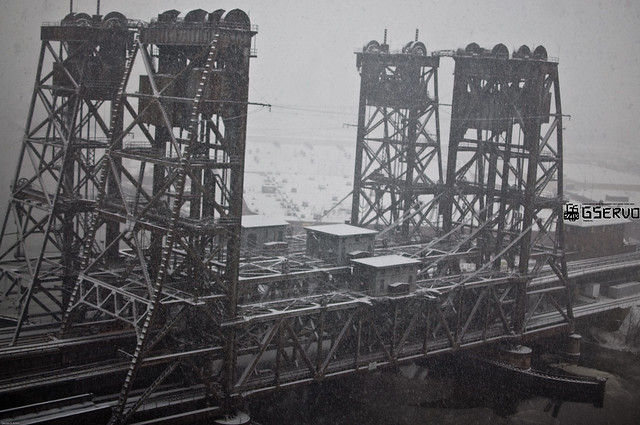
Cold weather photography can be fun if you prepare correctly. Dressing warm is the first thing. However, bring gloves. Some people hate the feel of regular gloves. There are gloves like the Aquatech Sensory Gloves, which allow fingertip control for your camera while keeping your hands warm. Having a one gallon zip lock bag is recommended, so you can seal up you camera before you go indoors. This will help camera slowly warm up in a dry manner. Use a rain cover in the snow to prevent the camera from getting wet. In addition, do not forget lens cleaner cloths; moisture can form on the front of your lens very quickly. A memory card wallet is nice to have to keep your SD or CF cards in control. In the winter, try to keep on a decent UV or clear filter to protect from debris from moving card or the occasional snowball.
White Balance

Setting the white balance for snow can be tricky at times. You can find yourself with blue snow in your shots or strand shadows. First thing to do, if you can, is shoot raw. Auto white balance can make the snow look a little blue. Shooting in raw will enable you to make changes to the color that you could not do in Jpeg. You will be able to make your snow white. Play with your white balance settings until you find what you like or manually set it using a grey card or white balance cap.
Exposure
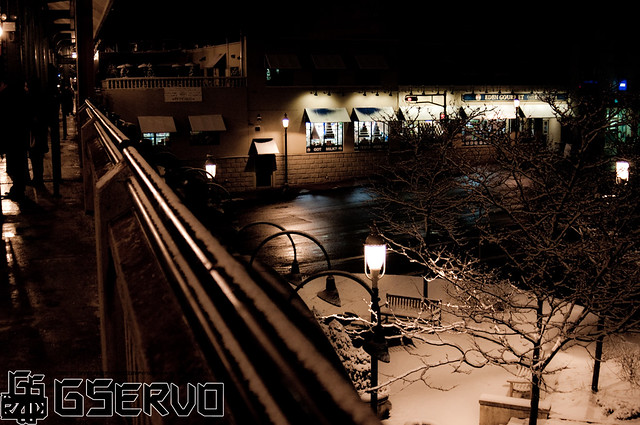
In the snow, you want to maximize the detail. This can be difficult because there so much white to deal with. Over expose, you will wash out details. Under expose, the image will be too dark. In snow-covered scenes, I like shoot in manual mode so I can make subtle adjustments. Make use of your histogram also. This graphic representation of the tonal range of your photography will allow you to get your exposure just right. The histogram will tell you the level of adjustment you need to make to your photo if you take a quick look at it after your shots. Another important thing to think about in the snow is your metering , I won’t go into this too much because we have a great article here, but I will tell you that I use matrix metering on my Nikon D90 in the winter.
A Little Flash
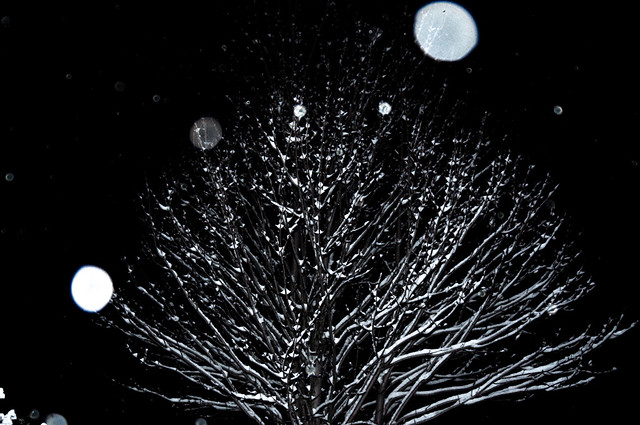
When it is snowing, you can use your flash to light up the snowflakes a bit. All you need is a little extra light. A pop up flash with the Gary Fong puffer or an off camera flash like my Nikon SB600 and a diffuser like the Gary Fong lightsphere, can go a long way. Lowered by a few stops the flash adds a little pop if caught just right.
Show How the Snow Affects People
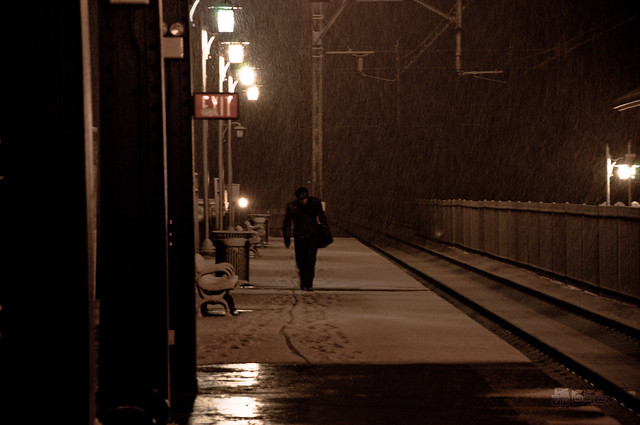
During heavy snows, one can capture great images of people. When people are trying to not fall or have a little fun, they are not focusing on you. Capture the moments: snowballs in flight or people skiing in the streets. There are many things going on from people shoveling to pets playing. Take it all in.
Stay warm

Not all winter photography has to be in the cold. You can you choose to capture you images from a warm spot. Inside a car, you can get a window mount. If you can find a nice high window with a good view, you can capture a vista or just people walking by.
Color
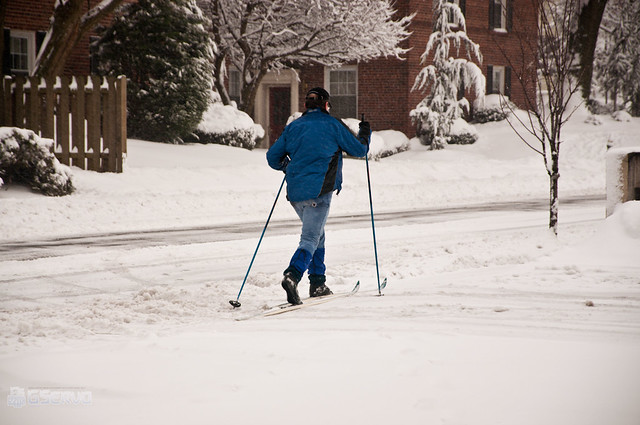
Try to look for color in the snow. Color can pop when everything else is grey cold and a little ugly. Color, diminished in the winter, is special. Do not be afraid to use it. Find points of color and focus on it, it will add contrast to your image.
Time of day

Make note of the time of day. Early in the morning after a snowfall, it is at its most pristine. Dress warm, get out there, and take that shot. Even if it’s right outside your house. In the evening, do not be afraid to use a tripod and take a long exposure, you can get light trails of cars going by, or snow falling. It is all in how you use the available light.
Don’t Forget to Share

Let your winter photography be social. Your images can be great conversation pieces with friends or on the web. Join groups like our Flickr group or some of the other winter groups, and drink some coffee or hot chocolate. Rule the winter. Do not let it rule you.
Please Support The Phoblographer
We love to bring you guys the latest and greatest news and gear related stuff. However, we can’t keep doing that unless we have your continued support. If you would like to purchase any of the items mentioned, please do so by clicking our links first and then purchasing the items as we then get a small portion of the sale to help run the website.

